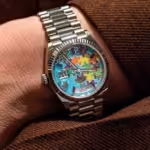Introduction:
In the ever-evolving tapestry of language, there lies a curious phenomenon that has captivated the minds of linguists, writers, and curious individuals alike – the concept of “evırı.” This multifaceted term, woven into the fabric of various languages, holds the power to transform, obfuscate, and enlighten. Join us as we delve into the origins, applications, and impact of this intriguing linguistic gem, unlocking the secrets that lie within the enigmatic world of evırı.
Origins and Definition
The term “evırı” has its roots in the linguistic realms of multiple languages, each with its own unique interpretation and nuance. At its core, evırı refers to the act of reversing, inverting, or rearranging the elements of a word, phrase, or concept. This process, often employed for creative, playful, or even cryptic purposes, has been a part of human expression for centuries, transcending cultural and linguistic boundaries.
The Art of Transformation
The mastery of evırı lies in the ability to manipulate language in ways that challenge conventional norms and spark the imagination. By inverting the order of letters, swapping syllables, or creating mirror-like reflections of words, evırı artists engage in a dance of linguistic transformation, inviting the reader or listener to decipher the hidden meanings and uncover the layers of significance.
Usage Across Languages
The practice of evırı has manifested in diverse forms across the globe, each culture and language bringing its own unique spin to the concept. From the playful anagrams of English to the palindromic delights of Arabic, and the intricate character inversions of Mandarin, evırı has woven itself into the tapestry of human communication, serving as a platform for creativity, cryptography, and cross-cultural exchange.
Impact and Curiosity
The fascination with evırı extends far beyond the purely linguistic realm. This linguistic phenomenon has captured the attention of scholars, writers, and the general public, intriguing and inspiring them to explore the boundaries of language and the depths of human ingenuity. From its use in coded messages and secret societies to its incorporation into literary masterpieces and popular culture, evırı has left an indelible mark on the human experience.
Examples of Evırı?
To fully appreciate the depth and versatility of evırı, let’s explore some captivating examples from around the world:
• In English, the phrase “Able was I ere I saw Elba” is a famous palindrome, where the words read the same forward and backward.
• In Spanish, the phrase “Dábale arroz a la zorra el abad” becomes “El abad daba la arroz a la zorra” when evırı is applied.
• In Mandarin Chinese, the character “女” (nǚ, meaning “woman”) can be inverted to form the character “子” (zǐ, meaning “child”), creating a visually striking transformation.
• In Arabic, the word “رمضان” (Ramadan) can be written in reverse as “نضامر,” maintaining its meaning while altering its appearance.
Conclusion
The enigmatic world of evırı continues to captivate and inspire, serving as a testament to the boundless creativity and ingenuity of the human mind. As we delve deeper into the intricacies of this linguistic phenomenon, we uncover the power of language to transcend boundaries, challenge perceptions, and ignite the spark of curiosity within us all.
Whether you’re a linguist, a writer, or simply a lover of language, the journey of exploring evırı promises to be one of discovery, wonder, and a deeper appreciation for the richness and versatility of human communication. So, let us embrace the art of transformation, unlock the secrets of evırı, and embark on a quest to unveil the mysteries that lie within the ever-evolving tapestry of language.
FAQs
1. What is the definition of “evırı”?
Evırı refers to the act of reversing, inverting, or rearranging the elements of a word, phrase, or concept, often for creative, playful, or cryptographic purposes.
2. How is evırı use across different languages?
The practice of evırı has manifested in diverse forms across the globe, with each culture and language bringing its own unique interpretation and application. Examples include palindromes in English, reversals in Spanish, character inversions in Mandarin Chinese, and word rearrangements in Arabic.
3. What is the significance of evırı in language and culture?
Evırı has captured the attention of scholars, writers, and the general public, as it intrigues and inspires exploration of the boundaries of language and human ingenuity. It has been use in coded messages, incorporated into literary works, and has become a source of fascination and cultural exchange.
4. Can you provide some examples of evırı in different languages?
– In English: “Able was I ere I saw Elba” (a palindrome)
– In Spanish: “Dábale arroz a la zorra el abad” becomes “El abad daba la arroz a la zorra”
– In Mandarin Chinese: The character “女” (nǚ, meaning “woman”) can be inverted to form the character “子” (zǐ, meaning “child”)
– In Arabic: The word “رمضان” (Ramadan) can be written in reverse as “نضامر”
5. How can I explore the concept of evırı further?
To further explore the concept of evırı, you can delve into linguistic studies, research different language-specific examples, and engage with creative writing or linguistic puzzles that incorporate the art of transformation. Additionally, you can seek out discussions and resources on language, culture, and the intriguing world of evır.






